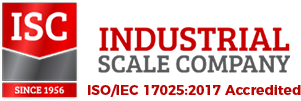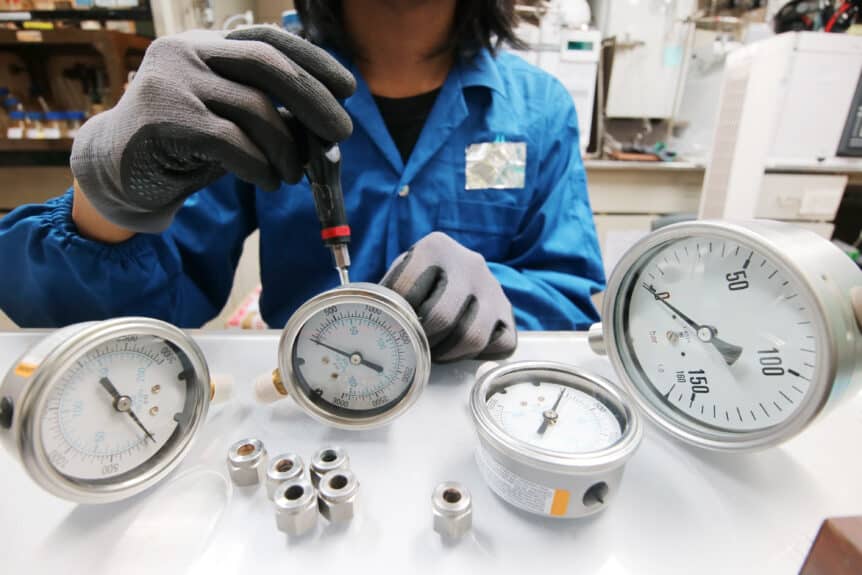Pressure gauges are essential tools for industrial processes that require accurate measurement of pressure levels. However, like all measuring instruments, they can drift from their initial calibration over time. As a result, it is crucial to calibrate pressure gauges regularly to maintain their accuracy and ensure reliable readings. In this article, we will explore the importance of pressure gauge calibration, factors that affect calibration frequency, best practices for calibration, and techniques for different types of gauges. We will also discuss common mistakes to avoid during calibration and provide practical tips for scheduling calibration. By the end of this article, you will have a better understanding of how often pressure gauges should be calibrated and the best practices for maintaining their accuracy.
Introduction to Pressure Gauges and Calibration
Pressure gauges are essential tools used in various industries, such as oil and gas, chemical, and manufacturing. These devices measure the amount of force exerted by a fluid or gas in a process pipeline or container. However, like all measuring instruments, pressure gauges are subject to wear and tear, which can affect their accuracy over time. This is where calibration comes into the picture.
What are Pressure Gauges?
A pressure gauge is a device used to measure the pressure of a gas or fluid, such as air, water, or oil. It consists of a dial or digital display that shows the pressure reading and a sensing element that measures the pressure. The sensing element is connected to the dial or display through a mechanism that converts the pressure reading into a visual or digital format.
What is Calibration?
Calibration is the process of comparing a measuring instrument’s output with a known standard to determine its accuracy. It involves adjusting or correcting the instrument’s output to match the standard. Calibration ensures that the measuring instrument is accurate and reliable, which is crucial in various industrial processes.
Importance of Pressure Gauge Calibration for Industrial Use
Reasons for Pressure Gauge Calibration
Pressure gauge calibration is essential for ensuring accurate and reliable measurements in industrial processes. Here are some reasons why pressure gauge calibration is important:
- To ensure product quality and safety
- To comply with regulatory standards and requirements
- To prevent equipment failure and downtime
- To increase productivity and efficiency
Consequences of Inaccurate Pressure Measurements
Inaccurate pressure measurements can have severe consequences in industrial processes. They can lead to the following:
- Product quality issues and safety hazards
- Equipment damage and downtime
- Inefficient operation and decreased productivity
- Non-compliance with industry standards and regulations
Factors Affecting Calibration Frequency of Pressure Gauges
Environmental Factors
Environmental factors, such as temperature, humidity, and vibration, can affect the accuracy of pressure gauges. High temperatures and humidity can cause the sensing element to expand or contract, leading to measurement errors. Vibration can also cause the sensing element to move, resulting in inaccurate readings. Therefore, pressure gauges used in harsh or extreme environments may require more frequent calibration.
Frequency of Use
The frequency of use can also affect the calibration frequency of pressure gauges. Gauges that are frequently used may require more regular calibration than those used less often. The stress and wear and tear on the sensing element can cause it to drift from its initial calibration.
Type and Design of Pressure Gauge
The type and design of the pressure gauge can also affect its calibration frequency. For example, digital pressure gauges may require less frequent calibration than analog gauges. Additionally, gauges with high accuracy and stability may require less frequent calibration than those with lower accuracy and stability.
Best Practices for Calibrating Pressure Gauges
Preparation and Planning
Proper preparation and planning are critical for effective pressure gauge calibration. This includes identifying the calibration standard, establishing calibration procedures, and ensuring that the necessary equipment and tools are available.
Proper Calibration Techniques
Proper calibration techniques are essential to ensure accurate and reliable pressure readings. This includes zeroing the gauge before calibration, ensuring a stable environment, and following the manufacturer’s recommended calibration procedures.
Documentation and Record-Keeping
Documentation and record-keeping are essential for maintaining compliance with regulatory standards. This includes recording the calibration date and results, keeping calibration certificates, and maintaining an inventory of calibrated gauges. Proper documentation and record-keeping can also help identify potential issues and trends in gauging performance over time.
Calibration Techniques for Different Types of Pressure Gauges
There are several types of pressure gauges available in the market, including dial or analog gauges and digital gauges. Each type has different calibration techniques to ensure their accuracy and reliability.
Types of Pressure Gauges
Dial or analog pressure gauges typically come in two designs: bourdon tube and diaphragm. The bourdon tube gauge is commonly used for measuring pressure in gas and liquids, while the diaphragm gauge is used to measure low-pressure applications. Digital pressure gauges, on the other hand, use sensors to measure and display pressure readings on an electronic screen.
Calibration Techniques for Dial or Analog Gauges
To calibrate a dial or analog gauge, you’ll need a calibration pump, a reference gauge, and a set of adjustment tools. The steps for calibration include connecting the gauge to the calibration pump, setting the pressure to the desired level, comparing the gauge readings to the reference gauge, and adjusting the gauge if necessary.
Calibration Techniques for Digital Gauges
Digital gauges typically have a zero button that can be used to recalibrate the gauge. You can also use a reference gauge to verify the accuracy of the digital gauge. If the gauge is found to be inaccurate, you’ll need to send it to the manufacturer or an authorized service center for calibration.
Common Mistakes to Avoid during Pressure Gauge Calibration
While calibrating pressure gauges, there are some common mistakes that can affect the accuracy and reliability of the gauge readings.
Using Incorrect Tools or Methods
Using the wrong tools or methods for calibrating a pressure gauge can result in inaccurate readings. It’s essential to use the correct calibration equipment and follow the recommended procedures to ensure the gauge is calibrated correctly.
Not Performing Regular Maintenance
Regular maintenance is necessary to keep a pressure gauge in good working condition. Neglecting maintenance can cause the gauge to deteriorate quickly, affecting its accuracy and reliability.
Ignoring Calibration Alerts or Warnings
Most pressure gauges have calibration alerts or warnings that indicate when they need calibration. Ignoring these alerts can cause the gauge to lose accuracy, resulting in incorrect readings.
How Often Should Pressure Gauges Be Calibrated?
The frequency of calibration depends on several factors, including manufacturer recommendations, industry standards, and practical tips for scheduling calibration.
Manufacturer Recommendations
Manufacturers typically provide recommendations on how often pressure gauges should be calibrated. These recommendations are based on the type of pressure gauge, its application, and the frequency of use.
Industry Standards and Regulations
Industry standards and regulations also provide guidelines on the frequency of calibration for pressure gauges. It’s essential to follow these standards to ensure compliance and maintain accuracy.
Practical Tips for Scheduling Calibration
In addition to manufacturer recommendations and industry standards, you can also use practical tips for scheduling pressure gauge calibration. These include scheduling calibration based on the gauge’s usage and environment, maintaining a calibration log, and setting reminders for calibration.
Conclusion and Final Thoughts on Pressure Gauge Calibration
Proper calibration practices are essential to ensure the accuracy and reliability of pressure gauge readings. It’s crucial to use the correct calibration techniques, avoid common mistakes, and follow the recommended frequency of calibration. Regular calibration can lead to significant benefits, including reducing the risk of equipment failure, improving safety, and increasing efficiency. In conclusion, regular calibration of pressure gauges is necessary for accurate and reliable measurement of pressure levels in industrial processes. By following best practices for calibration and avoiding common mistakes, you can ensure that your pressure gauges perform optimally and provide accurate readings. Always refer to manufacturer recommendations and industry standards when scheduling calibration, and keep accurate records of calibration activity for future reference. With proper calibration practices, you can maintain the integrity of your industrial processes and ensure safety and productivity in your workplace.
Frequently Asked Questions (FAQ)
How do I know if my pressure gauge needs calibration?
You can check the accuracy of your pressure gauge by comparing its readings to a reference standard. If there is a significant difference between the two readings, your pressure gauge may need calibration. Other signs of inaccurate readings include rapid fluctuations in pressure measurements and visibly damaged or worn-out gauges.
Can I calibrate my pressure gauge myself?
While it is possible to calibrate pressure gauges yourself, it is always recommended to hire a professional calibration service to ensure accuracy and reliability. Professional calibration services have the necessary equipment and expertise to calibrate pressure gauges accurately and can provide documentation of the calibration for auditing purposes.
How often should I calibrate my pressure gauge?
The frequency of calibration depends on several factors, including the type of pressure gauge, frequency of use, and environmental factors. Manufacturer recommendations and industry regulations provide guidance on calibration frequency, but it is always best to consult with a professional calibration service to determine the appropriate calibration schedule for your specific application.
What happens if I don’t calibrate my pressure gauge?
If you do not calibrate your pressure gauge regularly, it can lead to inaccurate readings and compromised safety in industrial processes. Inaccurate pressure readings can cause system failures, damage equipment, and put operators at risk of injury. Regular calibration ensures that your pressure gauge is performing optimally and provides reliable readings for safe and efficient industrial processes.

